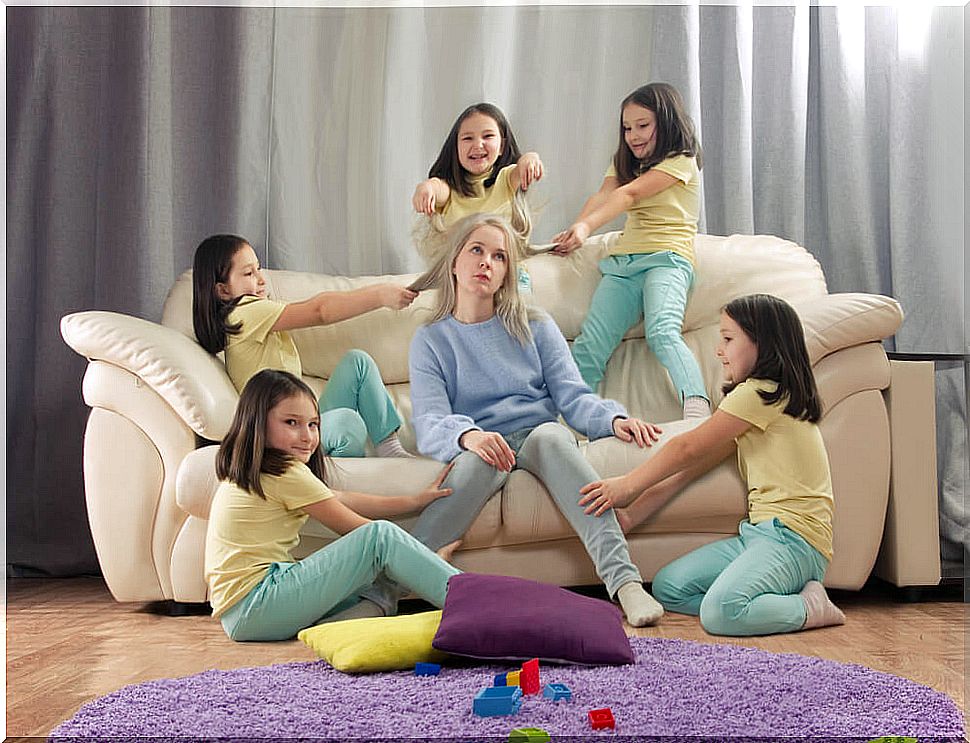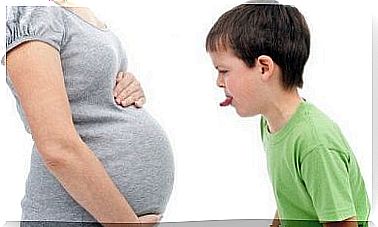Moody Or Hyperactive Children?

Moved or hyperactive children? Surely, if your child is pure energy and not standing still, you have come to ask yourself this question and, in reality, it is something that worries us parents, especially when they enter school and receive complaints from the teacher that our child does not stop.
More and more children are labeled “hyperactive” at an early age, and at these ages it is very difficult to make a diagnosis to label the child for the rest of his life. This is something we have to be very careful with. Some of these children may be hyperactive, but a large proportion are simply children with a lot of energy and a need for movement.
Moved or hyperactive children at school
On many occasions, parents observe that our children, from the time they are small, cannot be quiet; they are dynamic children who like to investigate and discover things; they sit for a short time. When your little one enters school, the first thing the teacher tells you is “you have a very restless child, perhaps he has ADHD (Attention Deficit Hyperactivity Disorder), I will tell the counselor to take a look at him.”
But of a child who has just entered the first year of Infant at 3 years old, can it be said that he is hyperactive? It shouldn’t and shouldn’t be this way. There are many specialists who say that the diagnosis of ADHD should not be made until 2º of Primary (around 7-8 years), which is when the evaluation can begin.

If from such an early age we already put the label of hyperactive, it will drag her throughout her education stage and negatively mark her self-esteem and way of being. And maybe it’s just a kid with a need to experiment, touch, move, etc.
Every child is different
Children with a need for movement, who do not stop, there are and always will be, and they do not have to have a hyperactivity problem. Nowadays, the first thing you do is put the label on it and immediately start medicating.
All children are different and, in principle, we only worry when their behavior becomes problematic. There are children who find it difficult to relate, but do not put down the books, and other children with learning disabilities, but who do not bother in class.
In both cases it is clear that there are emotional problems, but they are not labeled, as is done with a child who does not stop, for the simple fact that their characteristics can annoy the teacher in class. On many occasions, children are treated for whom there is still no reliable diagnosis, but in this way they do better in class.
Moved or hyperactive children: solutions
Here we propose some solutions to take into account the behavior and the way of being our little ones before labeling them as hyperactive.
Attention to diversity at school
Not all children are the same and that is not why they have to have a problem. From this approach, the need for children to touch, move, experiment with their hands should be verified so that, in this way, we understand the difficulties they have to be seated for long periods. Furthermore, if there is attention to diversity in the school, this must be taken into account.
Drug therapy
From the physiological point of view, we find the child’s medication to control this hyperactivity, but sometimes we medicate without actually having ADHD. You have to be careful and wait for an evaluation when it needs to be done.
Importance of psychological care
More and more families and educators are asking that this problem be treated taking into account that it can have a psychological origin and treatment. Some causes of this can be:
- Lack of stimuli at an early age that facilitate the bond of children with their parents.
- Excess of artificial stimuli, such as television, mobile, video games, tablet , etc.

Healthy nutrition
Many nutritionists have indicated that an excess of refined sugars and chemical additives can cause excitability in children.
Serve your needs
We have to take into account the nature of each child, their needs, their desires and, of course, we must establish limits and norms, but without being too rigid.
At home we can work with the child on activities related to touch : touching water, mud, painting …, and establishing an area where they can release that energy to move, jump, run.
Facilitate the expression of your emotions
We will let the child express his emotions and tell us how he feels and, of course, give him caresses and massages.
About moved or hyperactive children
As you can see, this is a sensitive issue. There are children diagnosed and medicated and they are not children with hyperactivity disorder. Labels at an early age are not a favor for children either.
The parents must prevent our children are a diagnosis before age 7 or 8 years, since it has not yet been done a full evaluation. In younger children, their excess movement may still be due to a lack of cognitive maturation.










